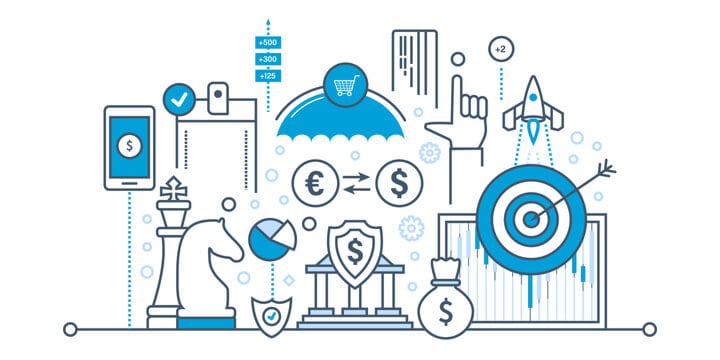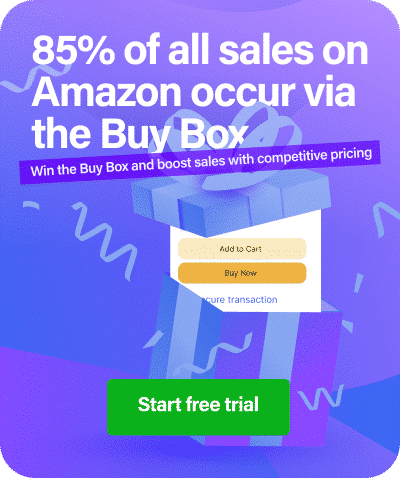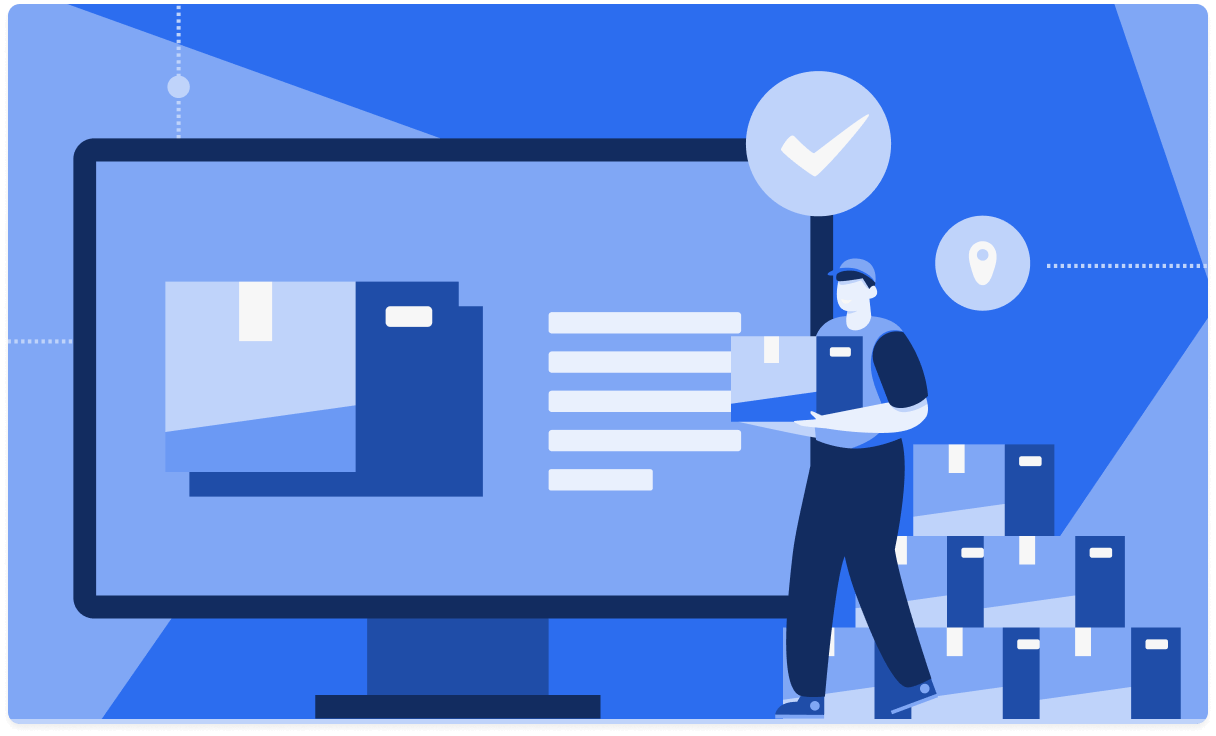Selling online is big business, but with so many ‘entry-level’ eCommerce options such as eBay, Amazon and Shopify, it can also be a highly competitive arena.
While it would be fantastic if price wasn’t one of the most significant driving factors in sales, and consumers made their purchasing decisions based only on the quality, features and benefits of your product, your customer service and ease of ordering, unfortunately, most often this isn’t the case.
In particular, for the eCommerce entrepreneur, success or failure can all too often come down to product price. In this world of ‘throw-away’ products and competition in pretty much every niche you can imagine, price is a massive factor for any business. But setting your product prices is not an easy task.
It’s for this reason that you must have an effective pricing strategy. Here, we list the 7 best e-commerce pricing strategies you can implement now.
What is a Pricing Strategy?
Before we look at the different types of eCommerce pricing strategies, and there are a few, let’s be clear as to what a pricing strategy actually is. Because it’s not about simply choosing a price and then retailing your product at that price.
A pricing strategy will help you determine the price which will maximize your profits while remaining attractive to the consumer. A logical equation if you like, which you use to establish what is the best price for your product.
The thought of this may seem a complicated and time-consuming process, but your eCommerce pricing strategy is crucial. Taking a stab in the dark and plucking a random figure from nowhere, based on nothing is not going to assist you with your revenue goals.
And without a pricing strategy, the danger is that if you price your products too high, you won’t achieve sales. But price them too low, and you won’t make any profit. So, as an eCommerce business, you should make time to consider the best pricing strategy for your audience.
Why Do You Need a Pricing Strategy?
Well, running an eCommerce business without a pricing strategy in place is a poor business decision. In simple terms, your pricing strategy is an immensely important marketing tactic which enables you to find that perfect middle ground where you are offering value to consumers, but you are also optimizing profit and growing your revenue.
If you consider your own buying habits for a moment, you’ll understand that one of the most important ways a consumer chooses between products, is the price. It would be great if this wasn’t the case, but there’s no getting away from it.
Of course, this works both ways – not everyone is looking for a low price! Luxury and designer goods are typically priced high, and consumers expect this. These businesses know what they can charge; hence it is the most critical factor in their profitability.
It’s precisely the same for you! Pricing is the basis of your business. Knowing the optimum price you can charge for your product will ensure you maximize sales and keep a step ahead of your competition. Ultimately, getting your pricing right is the best way to improve your sales conversions.
Factors That Affect Your Ecommerce Pricing Strategy
It doesn’t matter whether your business is large or small, there are factors involved which are individual to your specific pricing strategy.
1. What Are Your Costs?
When determining your eCommerce pricing strategy, you’ll need to take into account production or product costs, labour costs, shipping costs, advertising and marketing costs.
For your product to be profitable and your eCommerce business to grow, you must charge an amount which covers all your outgoing costs and leaves you with a profit too. As your company grows, there will, of course, be economies of scale so bear that in mind.
2. What is a Fair Price?
It’s always going to be the case that if you put two products that are exactly the same in front of a consumer, they will mostly choose the lower-priced product. But there’s a difference between a ‘fair’ price and a ‘low’ price.
Low prices make your products appear affordable and may well encourage consumers to choose your product over your competitor. Still, fair prices can be achieved when you ensure your product has that little extra something over your competitor’s product, making your product ‘similar but better.’ That’s why you must always have a USP – but that’s another story!
3. What Price is Relative?
While your pricing strategy will be based on specific factors, you must also evaluate the prices set by your competitors. Research their prices, their offering as a whole and any tangible and intangible extras. Once you have that information, you can position your prices relative to theirs.
For example, if you sell screens and your selling point is that they are blackout screens, you can charge more than your competitor who sells non-blackout screens. In the same way, if you sell faux leather handbags, you can charge less than your real leather-selling competitors. It’s basic relativity.
So now comes the nitty-gritty – determining your pricing strategy. Unfortunately, there is no simple, single equation that allows you to quickly work out your best price because ultimately, it will depend on what type of pricing strategy is best for your business model.
For eCommerce, there are seven pricing categories you should consider.
7 Types of Ecommerce Pricing Strategy
1. Cost-Based Pricing
This is the most straightforward pricing strategy, but it is business focussed rather than customer focussed. In other words, the price is based on the profit you want to make, rather than how much a customer might be willing to pay. You’ll likely need to tweak the pricing until you find the optimum price with this strategy.
Add together the cost of your products, including shipping and marketing and the profit margin you would like to achieve and that is your selling price!
Example:
- Product: $5
- Shipping: $3
- Marketing: $5
- Total Cost: $13
- Required Profit Margin: $5
- Your Selling Price: $18
Best for eCommerce beginners.
2. Competitor-Based Pricing
This is another straightforward eCommerce pricing strategy. Here you’ll need to spend time researching your competitors’ pricing habits. You should look at all similar products priced high and low so that your research spans a whole range. Then take the average price based on your research. Be careful not to price your products below the average price as this can prompt a ‘race to the bottom’ between sellers. When this happens, there are no winners!
Subtract your costs from the researched average price, and you’ll be left with your potential profit margin based on that average selling price.
Example:
- Average Selling Price: $20
- Your Costs: $13
- Your Potential Profit: $7
Best for eCommerce beginners.
3. Value (Consumer) Based Pricing
This pricing strategy is a mix of cost-based and competitor-based strategies. It is always based on the value you provide to your customers through your products, so it’s a little more complicated than the previous pricing strategies. This pricing strategy must be a fair price both for you and your customer for it to be successful, but it can promote customer loyalty. It is potentially the best pricing strategy but will take a little more effort and research.
But how do you figure out ‘value’? That’s a good question. You must work out what value you can bring to your customer, with your USP.
Work out what is the lowest price you can sell your product for. Then take the average selling price researched previously. The difference, as we calculated earlier, is your potential profit. Now you must decide whether you will sell for the average selling price and take the profit as calculated or add your USP (unique selling point) thus increasing the value and therefore taking the opportunity to increase your price – and your profit.
Example:
- Lowest Selling Price: $13
- Average Selling Price: $20
- Your Potential Profit: $7
- Add Value with a USP
- New Value-Based Selling Price: $22
- New Value-Based Potential Profit: $9
Best for eCommerce businesses with some experience in testing pricing strategies.
4. Dynamic Pricing
Dynamic simply means flexible. So, a certain amount of flexibility on your price will allow you to set optimal prices in response to demand and competition fluctuations.
Example:
If the competition increases, you can drop your price so that you are the cheapest seller. If your competitor runs out of stock and demand is high, you can raise your price because it’s a sellers’ market. This is a typical ‘supply and demand’ strategy.
You will need to keep a sharp eye on your competitors when you choose Dynamic Pricing and so using repricing software could be advantageous.
Best for eCommerce businesses with time and resources to keep up with research or budget to spend on repricing software.
5. Bundle Pricing
The Bundle Pricing strategy is particularly suitable if you sell in a highly competitive niche on a third-party platform such as Amazon or eBay. The approach itself is super simple, the clue being in the name! You bundle a range of complementary products together to form a kit or a set for a discounted price.
By bundling products of a similar nature, you get the opportunity to increase your average order value because you’ll be offering customers the convenience of purchasing all the things they require, in one handy, single transaction.
Example:
A customer purchasing a pair of boxing gloves is likely to be also looking at wraps and pads. Bundle these products together to form an easy-to-purchase set of boxing equipment and price at a discount for the bundle.
Best for any eCommerce business selling multiple complementary products.
6. Loss Leader Pricing
You have probably seen those really cheap products online, right? The ones where you stare open-mouthed wondering how on earth any business can actually be making a profit on the product.
Well, the chances are they are not. Because they are loss-leaders. These are products sold at a low price as a hook to simply get customers to your website or product listings. The loss leader pricing strategy works because once you have hooked the customer in, they are likely to browse your other products and purchase additional items.
Example:
- Loss Leader: A teeth whitening kit priced at $20 and refills priced at $10 each. Most of the profits will be made on returning customers purchasing the refills.
- Loss Leader: A printer priced at $99 and ink refills costing $49 per set. Most of the profits will be made on the ink refills.
In the case of the printer, this is a one-off purchase, so it’s easy to offer it at a loss because you know you will make up for that loss with the profits from the ink refills!
Best for eCommerce businesses selling products that have easy ‘add-ons’ such as refills or something that is required as a repeat purchase.
7. Price Skimming
How many times have you seen an ‘exclusive offer’ on a product? Many times, I guess. And seeing an offer makes you want it all the more! It’s the exclusivity factor. So, this is what the price skimming strategy is built upon – a sense of urgency. You introduce a product at a high price to leverage the fact that it’s ‘new and exclusive’ so that your profits are maximized immediately.
Example:
- “Exclusive Offer”
- “Limited Stock”
- “Limited Availability”
By using these phrases in your product marketing, you build a sense of excitement and can hook buyers who have a fear of missing out.
Best for all eCommerce businesses who want to maximize their profits from the get-go.
Final Thoughts
The best eCommerce pricing strategy for you will always largely depend on the nature of your business and your goals.
You must remember that pricing can continuously change so you will need to keep on top of your pricing strategy. It’s not unusual for there to be a requirement that you run several pricing strategies simultaneously.
Be fair and make sure you offer value to your customers. They are smart, so your pricing strategy must also be smart.
Repricer.com is the fastest Amazon repricer on the market and a proud member of Amazon’s Marketplace Developer Council. Try repricing free for 14 days and increase your profits on Amazon, eBay, Walmart, Shopify and more.






